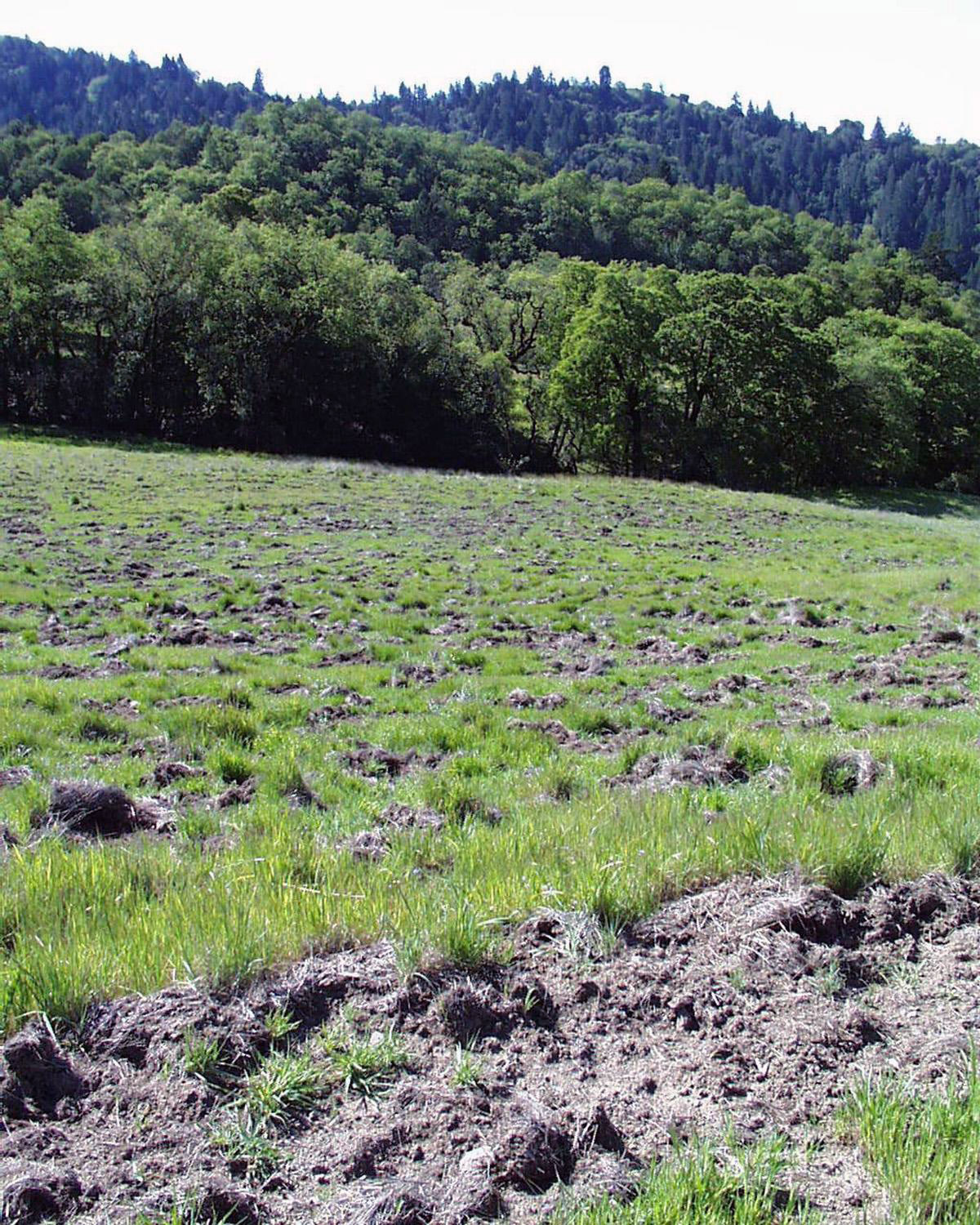Ecology:
Soil Disturbance
Coastal prairies may have evolved with intense levels of soil disturbance from burrowing and rooting animals, many now extinct in coastal prairie habitat. Burrowing for food, such as tubers and roots,has the potential to cause extensive disturbance due the repetitive and widespread nature of the activity.
Burrowing Animals of Coastal Prairie
- Badgers (Taxidea taxus)
- Valley pocket gopher (Thomomys bottae)
- Deer mouse (Peromyscus maniculatus)
- Western harvest mouse (Reithrodontomys megalotis)
- California vole (Microtus californicus)
- Striped skunk (Memphitis memphitis)
- Long-tailed weasel (Mustela frenata)
- Black bears (Ursus americanus)
- Wild Pigs: Feral Pigs (Sus scrofa domesticus) and Wild Boars (Sus scrofa scrofa)

While moderate digging disturbs and kills some plants, it also opens up opportunities for others. Digging can benefit plants by thinning out dense clumps of bulbs and creating open areas of mineral soil in which seeds can germinate.
Some species thrive under disturbance. In Montana, glacier lilies (Erythronium grandiflorum) are regularly consumed by Grizzly Bears. Meadows that were dug up by grizzlies contained higher nitrogen and carbohydrate content than those in undug meadows. Glacier lily plants growing in grizzly bear digs also produced twice as many seeds (California Native Plant Society Santa Cruz Chapter).
Several species are master's of soil disturbance in coastal prairies:
- In prehistoric times, huge areas in grasslands may have been dug up by short-faced bears (Arctodus simus) and other large herbivore megafauna that became extinct in the late Pleistocene (Hobbs and Mooney 1991).
- In more recent times, grizzly bears (extinct in California since 1922) dug up large areas as they foraged for bulbs.
- California Indians harvested the bulbs and corms of forbs in grassland areas, so much so that Europeans first attached the derogatory term “diggers” to Native Americans in the area (Anderson 2005).
- The arrival of Europeans heralded the introduction of wild boar (introduced in the 1500s) and domestic pig (introduced in 1925).Their hybridized descendants are extensive rooters, "rototilling" the soil to 15 cm and turning over 74-80% of the soil surface each year in areas where they densities are high. Some ecologists have considered whether feral pigs may at least partially fill the niche once occupied by grizzly bears (Cushman et al. 2004).
- Badgers (Taxidea taxus) use their long claws to dig their prey out of the ground and to dig dens. Their dens are burrows up to 30 feet long and 10 feet deep with large mounds of soil built up at the entrance. Badgers move to new dens sometimes as often as every day (Salmon and Gorenzel 2010).
- Despite their small size, pocket gophers create some of the most extensive soil disturbance in coastal prairie. Up to 30% of the area in California annual grasslands is covered by freshly excavated soil from pocket gopher activity (Watts 2010). In contrast to feral pigs, pocket gopher burrows can be up to 6 ft deep. Their efforts to bring the soil to the surface are quite different from pigs. This species can be a problem for native perennial grasses in restoration areas (Kotanen 1995; Kotanen 1997).